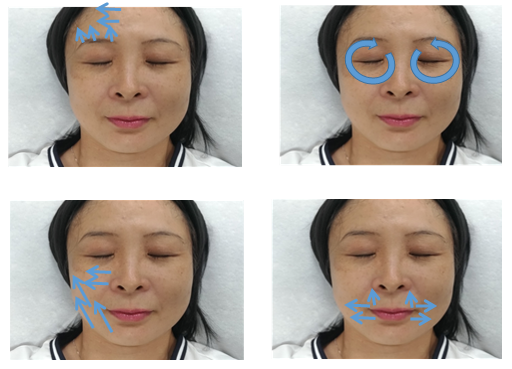Facial palsy is a kind of acute neural inflammation and one of the most common facial palsies is Bell’s palsy with symptoms like facial weakness, saliva drooling, poor eye-closing strength, abnormality of taste, and post-auricle pain. It is believed that it has something to do with viral infection or unknown causes; and the onset of the problem has nothing to do with age and gender. The prognosis of simple facial palsy is good, and there are some principles for self-protection and rehabilitation:
Precautions
- Avoid wind-blowing at eyes and face, or facing directly at fan, or staying at an air-condition room for too long; always put on hats for protection.
- For eye-protection: ( 1 ) wear glasses ( 2 ) use eye-drop medication before sleep ( 3 ) avoid foreign entity getting into eyes ( 4 ) avoid rubbing eyes with hands
- Watch out for the temperature of food before eating to avoid lip and tongue burning and keep good mouth hygiene.
Massage methods
Massage your face three times a day and put on some ointment or glycerin.
- Frontal area: use your thumb to massage the frontal area from eye-brow to hairline, as shown in figure 1.
- Eyes: massage along the eye margin from the medial eye angle, as shown in figure 2.
- Face: ( 1 ) massage from the nasal side to temporal area ( 2 ) from mouth angle to the middle of ear ( 3 ) from mandible to the inferior side of the ear as shown in figure
- Lips: ( 1 ) massage around lip margin ( 2 ) stretch right and mouth angle alternatively as shown in figure
- Hot pack with warm towel for ten minutes before and after exercise to improve the circulation

Exercise therapy
Perform the following exercises at least three times a day:
- Raise eye brows (show your frontal wrinkle) and wrinkle your eyebrow
- Tightly close your eyes, and work on blinking movement
- Sucking movement, like drinking with a pipe (from thick to thin)
- Blowing movement
- Make facial expression to exercise your facial muscles
- Chew gum with your lesion side
- Read the paper with voice out

